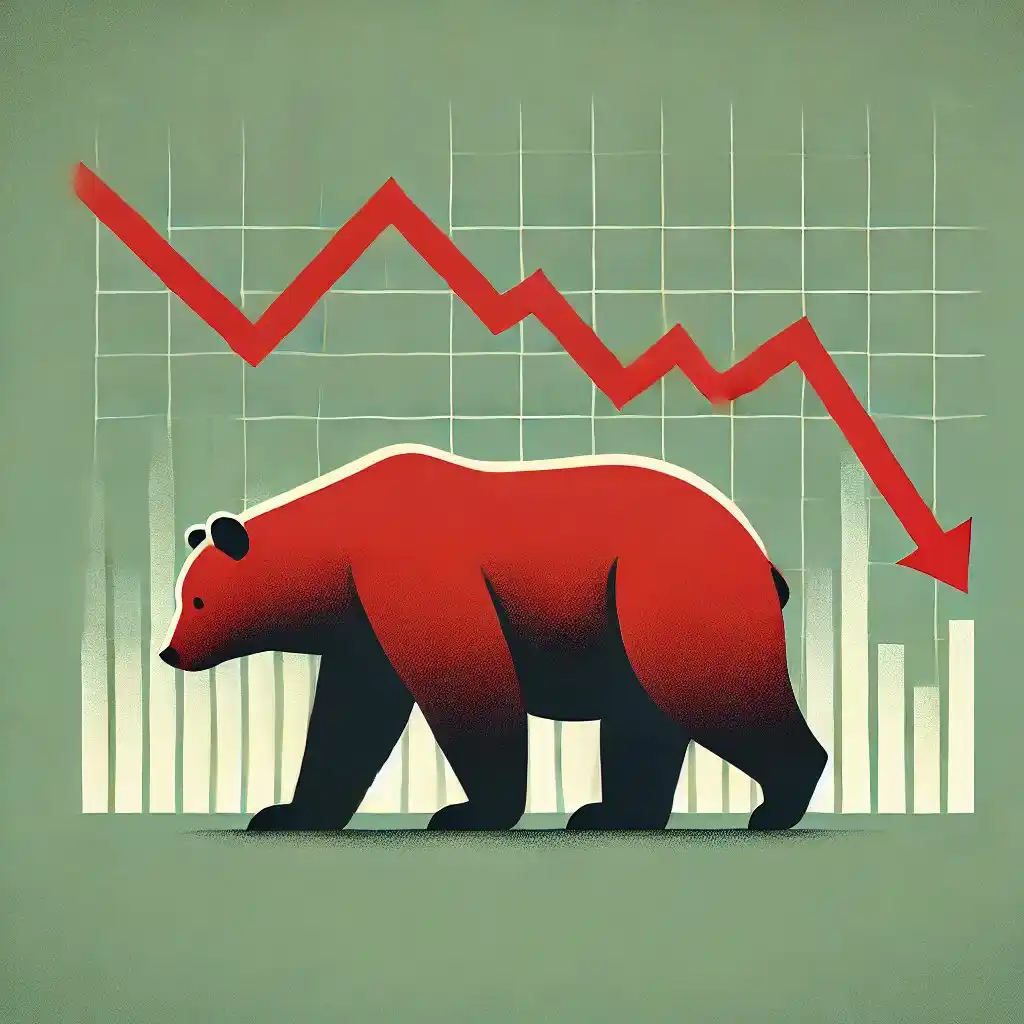
EquiGain
February 27, 2025 at 02:05 AM
The Ultimate Thread on the History of Bear Markets
Did you know
In 1992, the Sensex crashed 55% due to the Harshad Mehta scam.
In 2008, the market plunged 60%, wiping out years of gains.
In 2020, COVID-19 led to a 40% drop in just one month.
Yet, in every case, the market bounced back stronger.
Here is the history of India's worst bear markets, the reasons for the ongoing crash, and how to navigate it effectively.
A bear market is defined as a 20-30 per cent or more decline in stock prices from recent highs.
These phases are driven by factors like economic downturns, financial crises, or global uncertainty.
Bear markets often trigger widespread fear, forcing many investors to sell at the worst possible time.
The biggest bear markets in Indian history and their causes
1) 1992 - Harshad Mehta Scam (-55 percent crash)
The Indian stock market was booming in the early 90s due to excessive speculation and poor regulations.
Harshad Mehta, a famous stockbroker, exploited loopholes in the banking system to manipulate stock prices.
When the scam was exposed, the Sensex crashed by 55 percent, wiping out billions in investor wealth.
Many stocks lost over 70 to 80 percent of their value, and thousands of retail investors were ruined.
This crisis led to major reforms, including the establishment of SEBI as the regulatory authority.
2) 2000 - Dotcom Bubble Burst (-40 percent crash)
The late 90s saw a massive global technology boom, with investors betting on internet-based companies.
Indian IT stocks surged to unrealistic valuations, fueled by speculation rather than profits.
When the global dotcom bubble burst in 2000, Indian IT stocks crashed by 40 percent in just a few months.
Many speculative companies shut down, and even fundamentally strong companies took years to recover.
Lesson:
Avoid investing based purely on hype.
Focus on profitability and solid business models instead of short-term trends.
3) 2008 - Global Financial Crisis (-60 percent crash)
The US housing bubble collapsed in 2008, triggering a global financial meltdown.
Foreign investors pulled billions of dollars out of Indian markets, leading to panic selling.
The Sensex dropped by nearly 60 percent, wiping out years of gains in a matter of months.
Stocks like HDFC Bank fell 50 percent, Infosys fell 55 percent, and Reliance Industries dropped 70 percent.
However, by 2010, the market fully recovered and hit new highs.
Lesson:
Corrections do not last forever.
Fear creates opportunities—top stocks became available at bargain prices.
4) 2013 - Taper Tantrum (-25 percent crash)
The US Federal Reserve announced plans to scale back its stimulus program, triggering panic among global investors.
Foreign Institutional Investors (FIIs) withdrew large amounts of capital from emerging markets like India.
This led to a 25 percent crash in the Sensex and a sharp fall in the value of the Indian rupee.
However, market reforms and strong economic policies helped India recover quickly.
Lesson:
Short-term volatility does not matter in the long run.
Stay invested and diversify across multiple asset
classes.
5) 2020 - COVID-19 Crash (-40 percent crash)
The COVID-19 pandemic led to one of the fastest stock market crashes in history.
As lockdowns were imposed globally, businesses suffered and investor sentiment collapsed.
The Sensex dropped 40 percent in just one month, with many stocks hitting their lowest valuations in years.
However, as the economy reopened, the market staged a strong recovery, reaching all-time highs within two years.
Lesson:
The best buying opportunities come when there is maximum fear in the market.
Investors who remained calm and held onto their investments made significant gains.
6) 2024 - The ongoing bear market
India is currently going through another bearish phase, with stock prices declining due to multiple global and domestic factors.
What is causing the ongoing bear market in India?
1. Rising global interest rates
Central banks worldwide, including the US Federal Reserve and the Reserve Bank of India (RBI), have raised interest rates to combat inflation.
Higher interest rates reduce liquidity in the stock market, making investments in equities less attractive.
2. Foreign investor sell-off
Foreign Institutional Investors (FIIs) have withdrawn billions of dollars from Indian markets due to global uncertainties and better returns in developed markets.
Whenever FIIs pull out money, Indian stock prices tend to fall.
3. Geopolitical tensions
Ongoing geopolitical conflicts, rising oil prices, and supply chain disruptions have created fear and uncertainty in global markets.
Since India is a major importer of crude oil, higher prices lead to inflation and economic slowdowns.
4. Weak corporate earnings
Several large Indian companies have missed earnings expectations, leading to a sharp correction in stock prices.
When businesses struggle, investors lose confidence, resulting in stock sell-offs.
5. High inflation and slowing economic growth
Inflation remains a persistent problem, reducing consumer spending and corporate profitability.
Slowing economic growth leads to lower demand and reduced corporate earnings, further pressuring stock prices.
How should you handle a bear market?
Stay calm and avoid panic selling – Market corrections are temporary
Continue SIPs in mutual funds and stocks – Investing regularly helps you buy more when prices are low.
Focus on quality companies – Invest in businesses with strong fundamentals, low debt, and consistent earnings growth.
Diversify your portfolio – Do not rely on just one sector or asset class. Spread investments across different industries and asset types.
Keep cash reserves ready – Bear markets offer the best buying opportunities. Having liquidity allows you to take advantage of undervalued stocks.
Avoid timing the market – It is impossible to predict the exact bottom, so focus on long-term investing rather than short-term speculation.
Bear markets are where long-term investors build real wealth by accumulating quality assets at lower prices.
The key is to stay patient, remain invested, and take advantage of opportunities when others are fearful.
Happy Investing 💸
